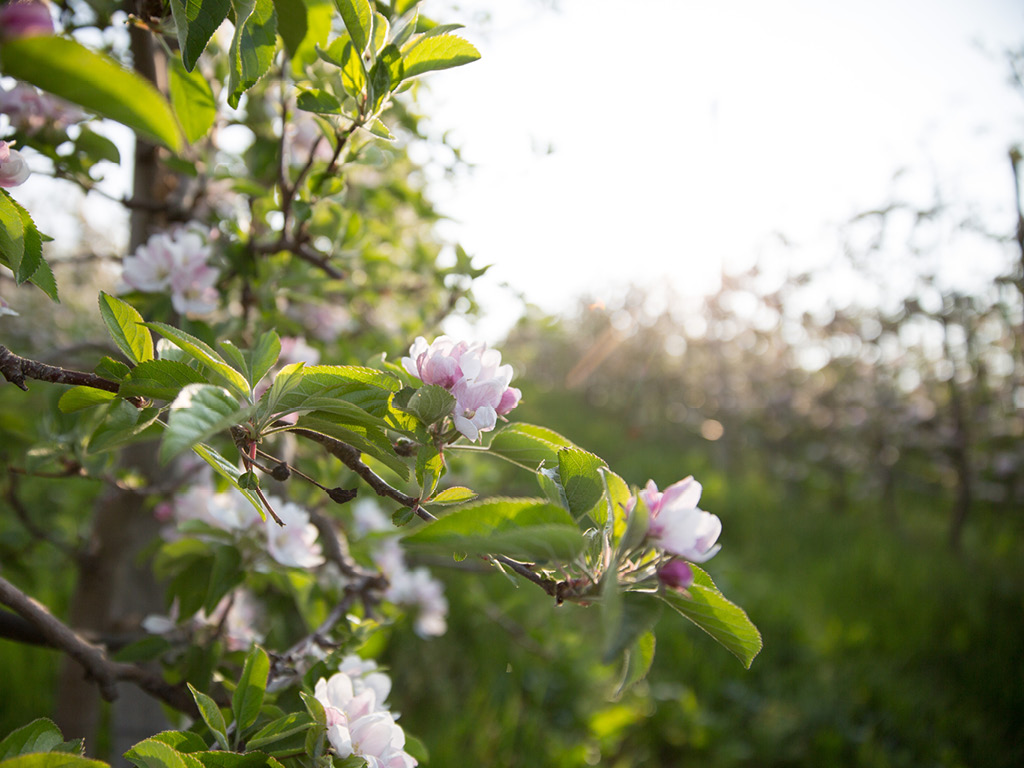The sea of blossoms in the apple orchard is stunning. I still remember the bare branches that gave no hint of life. From mid-April onwards, the blossoms shine in vibrant colours into the South Tyrolean sky. What is incomprehensible to me: until autumn, the precious mountain apples will emerge from the blossoms.
Deeply impressed by the beauty and the miracle of life that happens here, I want to understand more. I ask Thomas Kohl about bees, blossoms, biology.
The blossom countdown. In the case of the apple tree, the leaves unfold before the blossoms. In the "mouse-ear stage", about three weeks before the blossom, two small leaves unfold, then the inflorescence looks like a mouse's head with two ears.
Two weeks before flowering, the green, closed buds begin to separate from each other. When it is about ten days until flowering, the flower stalks become visible and longer, and the green sepals enclosing the flowers are slightly open. The petals become more visible and the sepals recede.
When the buds are round and plump like a ball and it will take about two more days until full flowering. The balls break open and the petals unfold. Voilà!
Bee or bumblebee? No bees, no apples, simple as it is. Other insects help out, but bees do the main pollination work. Moreover, pollen from another apple variety is needed for successful pollination; apple trees cannot pollinate themselves or their own variety.
An apple farmer must create conditions for successful pollination. Variety in spatial proximity and the visit of many bees are important. Honey bees in particular are suitable for this due to a variety of characteristics. For example, they are able to recognise the quality of pollen and only transport germinable pollen.
Wild bees and bumblebees have longer body hairs and can only push half as much pollen onto the stigma as honeybees.
A look into the sky. At the time of apple blossom, Thomas Kohl is particularly focused on the weather. After all, one night of frost can destroy the entire harvest.
But two special conditions up here at about 1,000 metres above sea level help us: because it is cooler, the blossom starts later in the spring, and so the danger of frosty nights is reduced. Our apple orchards are almost all located on the hillside. Exhausting to maintain and cultivate, wonderful for the trees because each one gets lots of sunshine. And frost has a tendency to flow downwards and "settle" in the valley.
Less is more. Apple trees ensure that excess blossoms fall off, thus minimising the number of fruits. A decisive task for the later quality of the apples, however, is the manual thinning of the fruits in June. This is how Thomas Kohl and his experienced staff ensure that all the apples get enough air, light, water and all the nutrients they need to develop into their best form.
And that is just the beginning. There is still a long way to go until autumn. Much can still happen in Thomas Kohl's apple orchards on the Ritten. There will also be apples in autumn 2022, but no one knows today how many and how aromatic the individual varieties will be.


